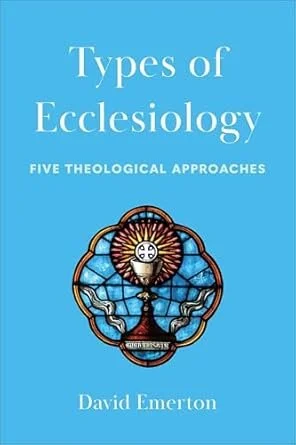The views expressed in this article are of the author only and do not necessarily represent those of the Center for Pastor Theologians.
If the primary task of ecclesiology is to account theologically for what the church is, then we have our work cut out for us as pastor theologians. What seems to be a straightforward charge is revealed in Emerton’s Types of Ecclesiology to be quite complex. Why? Because, as Emerton’s work makes clear, there is incredible diversity in the types of theological accounts of the church on offer today. Emerton seeks to distil them into a fivefold typology of contemporary options that allows us to properly discern the “what” of the church before we consider the “being” and “doing” of the church. This is indeed a worthwhile enterprise if we believe, with Emerton, that part of how we can combat a default “pernicious pragmatism” (p. xv) in our churches today is by recovering a distinctly theological conviction that “the church is a creature of God and God’s gracious acts” (p. 8).
In the introduction, Emerton appeals to 1 Corinthians to make clear “that the church is at once a divine and human reality. . . . [and that] the church’s sociohistorical existence is derivative of, and dependent upon, God and God’s gracious acts” (p. 7). How theologians parse out the divine/ human dimensions of the church and prioritize one of those over the other becomes the basis for his typology.
He begins his survey of ecclesiological options with type 1, empirical ecclesiology, which manifests the worst instincts of the “ethnographic turn” and “forgets God” as part of the ecclesiological equation. Type 2, performative ecclesiology, is a “softer” form of the first type; it still leans toward a sociohistorical account of the church’s life and remains “inadequately attentive to God’s life and work” (p. 15). Type 3, communion ecclesiology, crosses to the other side of the spectrum, emphasizing the life and work of God in such a way that “the church’s human empirical form is almost swallowed up by an account of God’s own triune life and activity” (p. 15). This “softer” prioritization of the divine over the human gives way to a “harder” form in type 4, ideal ecclesiology, which in prioritizing God’s aseity tends to “forget human existence” (p. 16). Finally, type 5, ecclesiological ecclesiology, is Emerton’s preferred type which offers a middle way seeking to balance human and divine agency while still recognizing the “asymmetrical relationship of divine and human togetherness in the church’s being” (p. 17).
The book’s strength is Emerton’s survey of and to some extent critical interaction with virtually every contemporary theologian who has made a substantial contribution to present-day ecclesiology. From Lindbeck and liberation theologians such as Gutiérrez and Cone (type 1) to Hauerwas, Healy, and Hardy (type 2) to Gunton, Moltmann, Jenson and Zizioulas (type 3) to Webster, Milbank and Torrance (type 4) to a representative of type 5, Tom Greggs, Emerton surveys the movers and shakers of contemporary ecclesiology in a way that is helpful and illuminating, demonstrating how different accounts of the church can be today.
The book’s weaknesses center on two main areas. The first weakness Emerton acknowledges: the spectrum of ecclesial types is a heuristic device that can tend to both simplify a particular theologian’s position and distort their position to fit within an established type. While the book is effective in giving a general description of the ecclesiological landscape today, it falls prey to the “inevitable limitations of typological analysis” (p. 17). This is most clearly seen in the fact that theologians from all five types would affirm what Emerton believes only the fifth type can truly undergird: that a proper ecclesiology requires “holding together in speech about the church, in an ordered and proportionate way, an account of both divine and human agency, such that the former relativizes but does not minimize the latter” (p. 157). That is “Ecclesiology 101,” and to presume that only those inheritors of Bonhoeffer’s ecclesiology (Emerton’s hero) as interpreted through the work of Greggs (Emerton’s doktorvater) can hit that mark is presumptuous.
More severe is the way Emerton misreads and misappropriates certain theologians that pre-date the contemporary period. The most egregious example is his claim that Luther, Calvin, Hooker and other magisterial Reformers have contributed toward the blind spots of type 2. For example, in arguing that the Reformers placed “a disproportionate emphasis on the church’s empirical form,” Emerton points to the fact that book 4 of Calvin’s Institutes dedicates only one chapter to the church’s ontology, followed by nineteen chapters emphasizing “matters of ecclesial form, function, and polity” (p. 53). This ignores the fact that while the church’s ontology as deriving from God’s life and action was largely assumed across the ecclesial spectrum in the sixteenth century, questions of the Protestant church’s form and function needed desperately to be set forth in more detail. Calvin, as did all the magisterial reformers, held that the church derived her life from God and God’s gracious acts as “a creature of [God’s] Word.”
Emerton’s work rightly places at front and center the need to place God and God’s action at the center of our ecclesiology amidst “the turn to the subject” that predominates in our day. It can serve as a contemporary (and Protestant) complement to Dulles’ classic Models of the Church in terms of offering an ecclesiological typology. But, to borrow Carl F. H. Henry’s advice on reading Barth, I would say read Emerton’s Types of Ecclesiology “with your eyes open.”
C. Ryan Fields (PhD, Trinity Evangelical Divinity School) is the Senior Pastor at Faith Evangelical Free Church in Acton, MA. He is a member of the St. Hildegard Fellowship of the Center for Pastor Theologians.




